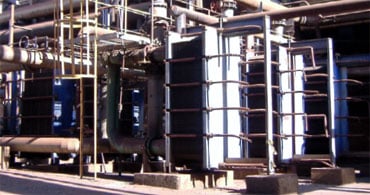Alfa Laval WideGaps reduce live steam consumption at Brazilian sugar-ethanol plant
At its Sertãozinho sugar and ethanol plant, SantelisaVale uses excess steam from the process to generate electricity. To conserve more live steam for power generation, six Alfa Laval WideGap plate heat exchangers were installed, replacing old, inefficient shell-and-tube units.
DATE 2023-11-28Designed to handle fibrous media, the WideGaps immediately dispelled customer concerns that fibers in the product could clog plate heat exchangers. “The WideGaps work very well and consumption of live steam is down by 40 to 50%,” says João Carlos Francisco, Production Manager for sugar extraction.
 The Sertãozinho cane sugar mill produces both thermal and electrical energy, so-called co-generation. Bagasse, the fibre remaining after the extraction of the sugar-bearing juice from the sugar cane, is used as fuel in a boiler. The bagasse produces more than enough steam to heat the sugar production process, and the excess live steam is used to drive a turbine that produces electricity which is sold to the national grid.
The Sertãozinho cane sugar mill produces both thermal and electrical energy, so-called co-generation. Bagasse, the fibre remaining after the extraction of the sugar-bearing juice from the sugar cane, is used as fuel in a boiler. The bagasse produces more than enough steam to heat the sugar production process, and the excess live steam is used to drive a turbine that produces electricity which is sold to the national grid.
Product
WideGap functions well with fibrous media, such as raw juice and limed juice. A gap of up to 17 mm between the plates allows fibres and particles to flow easily, minimizing clogging.
The WideGap is suitable for various heating media, such as liquids, steam and low pressure vapour.
Benefits
- Suitable for fibrous media
- Plate pattern designed for high turbulence and efficiency
- Easy to clean with Cleaning-in-Place equipment or mechanically
- Easy to expand capacity
Customer
SantelisaVale, Brazil
With 11 plants in operation, SantelisaVale is the second largest sugar and ethanol producer in Brazil.
The Sertãozinho cane sugar mill, some 300 km north of São Paulo, is the third in size in Brazil with a capacity of 29,000 tons of cane per day.
Now a standard in the Brazilian sugar industry, the plant is equipped for co-generation, producing both thermal energy and electricity.
